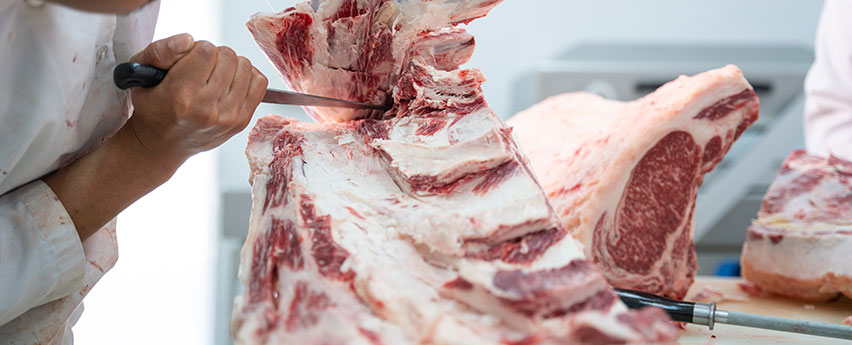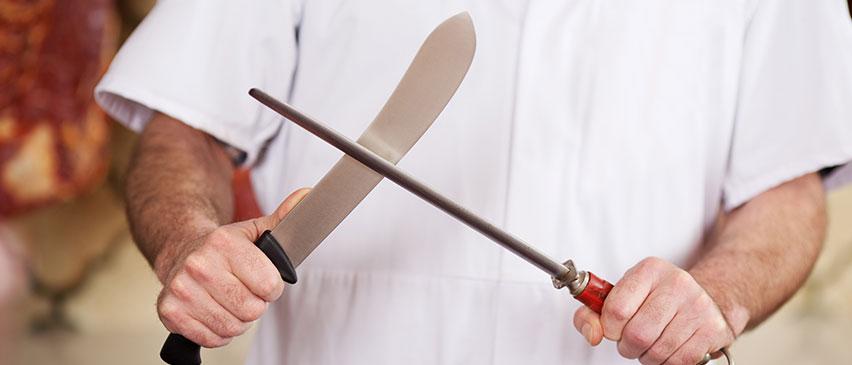Top tips to keeping your butchers knives sharp
Put simply, using a sharp knife makes the art of butchery safer. If you use a dull knife to cut through tough cuts of meat, then you need to press harder to cut, which can cause the blade slip and cause injury. That means learning how to sharpen your is a key skill you’ll always need as a commercial butcher. After all, if you sharpen your butchers knives in the right way, you’ll not only make your day-to-day duties that little bit easier, but you’ll also prolong the life of your knives.
So, if you’ve been thinking about sharpening your butchers knives but you’ve never carried out the process before, or you need a quick refresher on the best ways to do it, here are some of our top tips for getting the job done properly and keeping your knives sharp.
1) Decide the angle you’d like to sharpen to
When you’re sharpening your butchers knives, you want to create a sharp, effortless cutting edge. However, you need to be careful. If you create an angle that’s too sharp, the knife will dull quickly. So, before you start sharpening, consider how sharp you need your knife to be and how long you need the blade to remain sharp for.
While sharpening your knives to an angle lower than 20 degrees will make them incredibly sharp, you’ll find that the knives dull quickly and constantly need sharpening. This is because knives that are sharpened to 17 degrees and below are often best suited to softer foods, such as vegetables.

Of course, as a commercial butcher, you’ll be predominantly cutting tough cuts of meat in large quantities. As a result, you’ll need to sharpen your knife to a degree where the cutting edge lasts a lot longer. The exact angle you sharpen the knife to will depend on the knife you’re sharpening. While a boning knife will work perfectly well at a 20-degree angle, a cleaver that’s working with the toughest cuts may require an angle of up to 30 degrees.
2) Use the right tools
To achieve high quality results that will last, you’ll need to ensure you’ve got the right equipment to hand. Popular ways of sharpening a butchers knife include:
- Sharpening steels
- Whetstones and sharpening stones
- Manual and electric knife sharpeners
The option that’s best for you will largely be decided by personal preference and how many knives you need to sharpen. Sharpening steels, stones and whetstones are great for home chefs who only occasionally sharpen their blades, and butchers who sharpen one or two knives regularly.
But, if you’re a commercial butcher who uses multiple knives on a regular basis, an electric knife sharpener is often best for the job. This is because electric sharpeners can sharpen each of your knives in a matter of seconds. Plus, they hold your knife at the correct angle and ensure that you receive the perfect results each time.
No matter which method you choose, you should try to repeat the process regularly and ensure your knives don’t dull. This way, you’ll find it easy to keep your knives sharper for longer.
3) Clean your knife
Once you’ve sharpened your knife, it’ll then need cleaning. This is because the sharpening process can remove small metal pieces from the knife, which can stay sat on the blade’s surface. By quickly cleaning and drying your knife after sharpening, you can ensure none of these shards end up in the meat you’re cutting.
Here at Butchers Equipment Warehouse, we have a huge range of butchers knives, sharpeners and steels and electric knife sharpeners available. If you need any advice or you’re looking for something in particular, don’t hesitate to give us a call on 01254 427761. We’re here to help!




